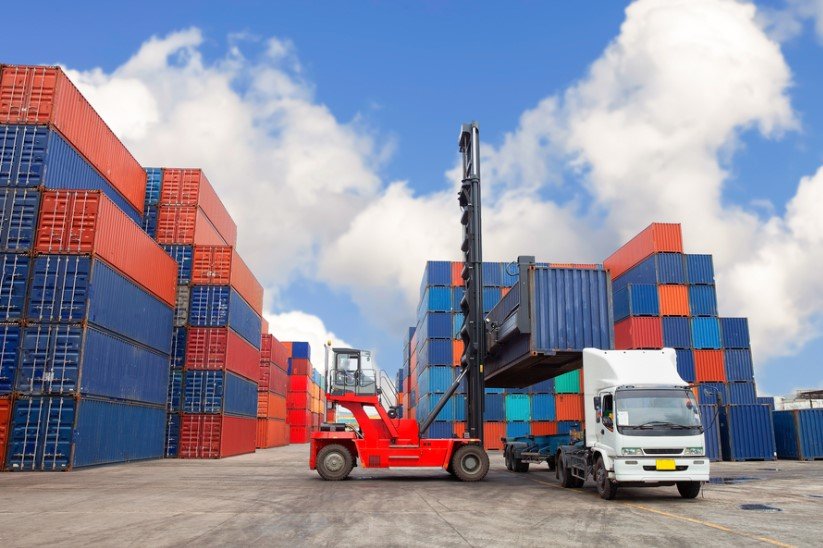From AI-driven routing to warehouse robots, a new generation of startups is breaking down the country’s delivery bottlenecks
India’s logistics system has long been infamous for its patchwork inefficiencies — late deliveries, paper-heavy documentation, unreliable inventory systems. But that’s changing fast. A wave of tech-driven startups is helping to digitize the spine of the Indian economy, one truck, one warehouse, one algorithm at a time.
In the past, moving goods across India was often more art than science. Now? It’s all data, dashboards, and dynamic delivery models. What used to be tracked on dusty clipboards is now optimized in real time with machine learning.
The numbers tell a compelling story
India’s logistics market was pegged at $228.4 billion in 2024, according to Grand View Research. And by 2030, it’s forecast to hit $357.3 billion — a compound annual growth rate of 7.7%. But the real action lies beneath the topline figures.
That’s where startups are plugging in.
You’ve got hyperlocal delivery enablers, freight-tech firms, AI-based fleet managers, drone innovators, and last-mile routing apps. They’re not just streamlining movement — they’re rewriting the rules.

Meet the new architects of movement
Take startups like BlackBuck, Delhivery, Locus, Shiprocket, and Porter. Each one is tackling a piece of the logistics puzzle.
BlackBuck uses data science to match truckers with loads, cutting down empty returns and idle capacity. Shiprocket simplifies e-commerce shipping for India’s booming D2C brands. Delhivery, which recently posted its first operating profit, is moving beyond delivery to full-stack supply chain solutions.
A few others carving their niche:
-
FarEye is building predictive visibility platforms for big retailers and FMCG players.
-
LoadShare provides plug-and-play logistics support in India’s Northeast and smaller towns.
-
BotX and GreyOrange are building warehouse robotics to fix fulfillment speed.
And these aren’t small bets anymore. Venture funding is flowing back in, after a slight post-pandemic dip.
What’s driving the tech rush?
Legacy systems simply can’t keep up. Flipkart, Amazon, JioMart — their growth depends on having predictable, fast, and transparent backend logistics. That means digitizing everything: inventory checks, truck routes, delivery verification, fuel consumption.
Even the government’s moves have helped. Initiatives like ULIP (Unified Logistics Interface Platform) and PM Gati Shakti are nudging the industry toward interoperability. The GST rollout, despite its rocky start, also gave a digital push to transport and warehousing systems.
And let’s not forget smartphones. With 1.2 billion users and cheap data, even truckers now get real-time load offers on their phones. The entire logistics value chain is inching toward the cloud.
Different tech for different problems
No one-size-fits-all here. India’s terrain and transport diversity demand localized solutions. That’s where tech stacks get interesting.
A tier-1 city warehouse might use AI-based picking robots. But in rural Maharashtra, an SME might rely on a WhatsApp bot to book a pickup.
Here’s a snapshot of different startup solutions by logistics stage:
| Stage | Tech Startups Tackling It | Key Innovation |
|---|---|---|
| First-mile pickup | Porter, LoadShare | Real-time pickup aggregation via mobile apps |
| Mid-mile transport | BlackBuck, Rivigo (legacy IP) | Fleet optimization using AI/ML |
| Warehousing | GreyOrange, Ecom Express | Robotics, inventory scanning systems |
| Last-mile delivery | Dunzo, Shadowfax, Delhivery | Smart routing, delivery agent optimization |
| End-user analytics | FarEye, Locus, Shipsy | Dashboard visibility for clients |
One sentence paragraph, just to breathe.
Every innovation here chips away at delays, wastage, and opacity.
The hurdles are real — and uniquely Indian
Of course, this isn’t a utopian sweep. Logistics is still hard here.
There’s the fragmentation — thousands of small carriers with no tech infra. Then there’s infrastructure — roads in rural belts can break a supply chain.
Add to that: high fuel prices, last-mile complexity, language barriers, and paper-based norms that still cling to daily workflows.
Startups have to balance ideal models with gritty realism.
Bullet point break — what’s still broken:
-
Limited tech adoption by legacy logistics firms
-
Lack of standardized APIs between platforms
-
Data privacy and security questions as platforms scale
-
Talent crunch in operational + tech hybrid roles
But something’s different this time — the ecosystem is aligning
Earlier attempts at digitizing logistics fizzled out. But now the pieces seem to be locking in.
Startups, government platforms, venture capital, and growing demand are finally speaking the same language — efficiency.
And it helps that large e-commerce players are investing in the ecosystem, not just using it. Flipkart’s warehousing arm now offers its infra to third-party sellers. Amazon has trained over 100K delivery associates in semi-urban areas.
This summer, several state governments have also signed MoUs with logistics startups to digitize agriculture supply chains — from mandis to cold storage.
That kind of multi-layered momentum is rare.
The next wave: drones, cold chain, and AI-tuned freight
So, where is this headed?
Experts believe three major shifts are on the horizon:
-
Drone-based deliveries — already being piloted for vaccine drops and urgent meds in northeast India
-
Cold chain tech — especially for food and pharma, with startups like Tan90 and Celcius innovating
-
AI freight orchestration — moving from reactive to predictive logistics, optimizing not just cost but carbon footprint too
And yes, sustainability is now part of the logistics pitch. Electric delivery fleets are popping up in Bengaluru and Delhi, driven by EV-as-a-service models.
It’s not just faster. It’s greener.








